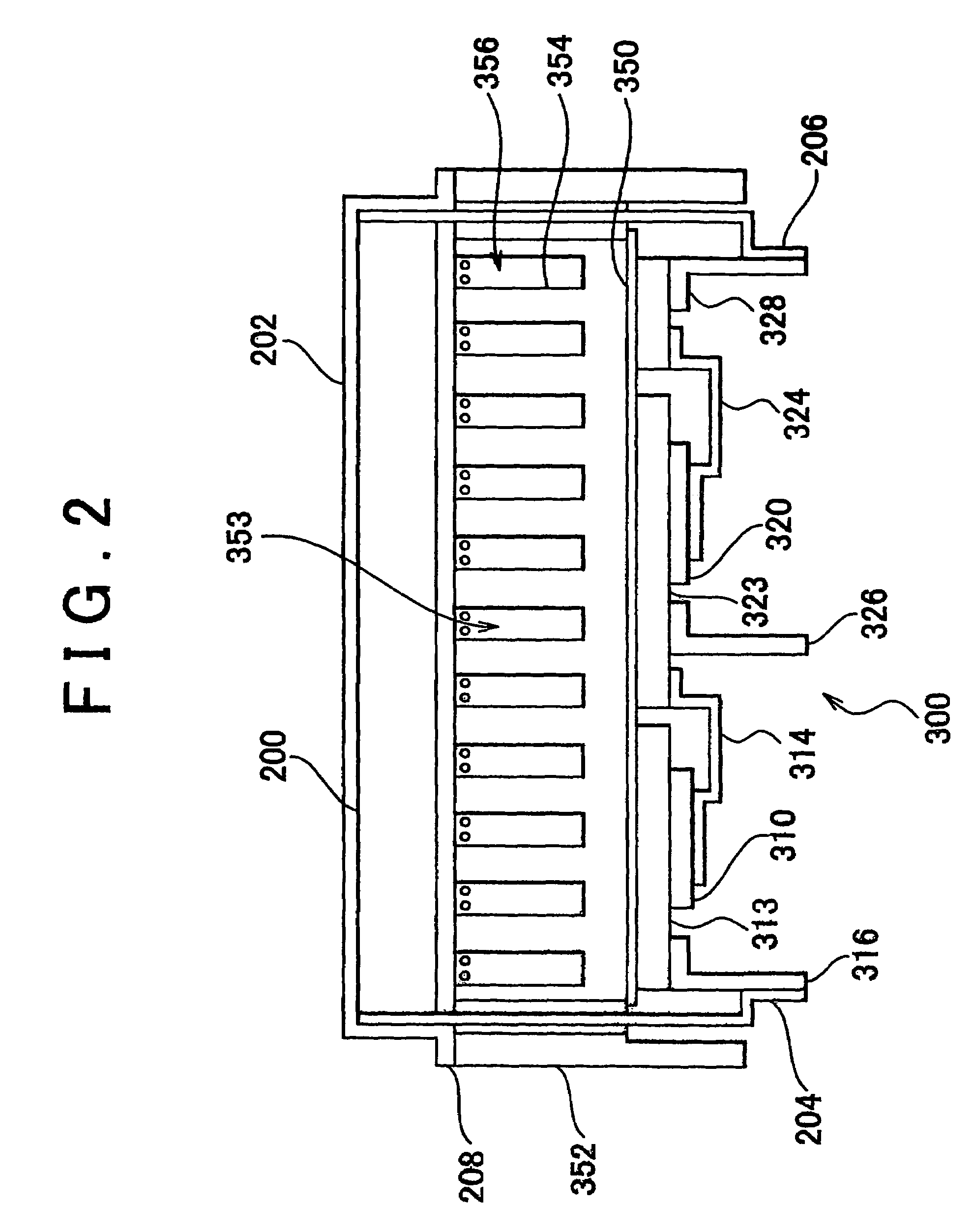Cooling structure of electric device
a technology of cooling structure and electric device, which is applied in the direction of indirect heat exchangers, dc-ac conversion without reversal, light and heating apparatus, etc., and can solve the problem that the performance of the second electric device is not affected
- Summary
- Abstract
- Description
- Claims
- Application Information
AI Technical Summary
Benefits of technology
Problems solved by technology
Method used
Image
Examples
embodiment 1
[0025]Referring to FIG. 1, a vehicle equipped with a cooling structure of a PCU having electric devices according to an embodiment 1 includes a driving battery 100, a filter condenser 200, an inverter 300, a driving motor 400, a signal generation circuit 500, and a control circuit 600.
[0026]The driving battery 100 is a combination battery formed by connecting a plurality of battery modules each formed of a plurality of cells connected in series. The driving battery 100 has a voltage value of, for example, about 300 V.
[0027]The filter condenser 200 is connected in parallel with the driving battery 100. The filter condenser 200 temporarily stores the electric charge to smooth the electric power supplied from the driving battery 100. The electric power smoothed by the filter condenser 200 is supplied to the inverter 300.
[0028]The inverter 300 includes six IGBTs (Insulated Gate Bipolar Transistor) 310 to 360, six diodes 311 to 361 each connected in parallel with the respective IGBT so a...
embodiment 2
[0046]An explanation with respect to a PCU having a cooling structure of electric devices according to an embodiment 2 will be described referring to FIG. 3. The PCU according to the embodiment includes a converter 700 held upward of the cooling passage 356 in place of the condenser 200 as described in the embodiment 1. Other structures and functions of this embodiment are the same as those of the embodiment 1. Accordingly no further detailed explanation of those structures and functions will be described herein.
[0047]FIG. 3 is a sectional view of the PCU according to this embodiment. The converter 700 is held in a converter case 702. A positive electrode of the converter 700 is connected to the positive electrode terminal 316 of the inverter 300 via a positive electrode bus bar 704. A negative electrode of the converter 700 is connected to the negative electrode terminal 328 via a negative electrode bus bar 706.
[0048]An opening of the recess portion 353 is coverd with the lower sur...
embodiment 3
[0051]An explanation with respect to a PCU with a cooling structure of electric devices according to an embodiment 3 will be described referring to FIG. 4. In the PCU of the embodiment according to the invention, the condenser 200 in the embodiment 1 is not held upward of the cooling passage 356, but a seal plate 800 serves to seal the opening of the recess portion 353. Other structures and functions of this embodiment are the same as those of the embodiment 1. Accordingly no further detailed explanation of those structures and functions will be described herein.
[0052]FIG. 4 is a sectional view of the PCU according to the embodiment 3. The seal plate 800 includes a plurality of projections 802 formed on the upper surface of the seal plate 800. The opening of the recess portion 353 is covered with the lower surface of the seal plate 800. The space defined by the inverter case 352, cooling fins 354, and the seal plate 800 allows the cooling water to flow therethrough. That is, the coo...
PUM
 Login to View More
Login to View More Abstract
Description
Claims
Application Information
 Login to View More
Login to View More - R&D
- Intellectual Property
- Life Sciences
- Materials
- Tech Scout
- Unparalleled Data Quality
- Higher Quality Content
- 60% Fewer Hallucinations
Browse by: Latest US Patents, China's latest patents, Technical Efficacy Thesaurus, Application Domain, Technology Topic, Popular Technical Reports.
© 2025 PatSnap. All rights reserved.Legal|Privacy policy|Modern Slavery Act Transparency Statement|Sitemap|About US| Contact US: help@patsnap.com



